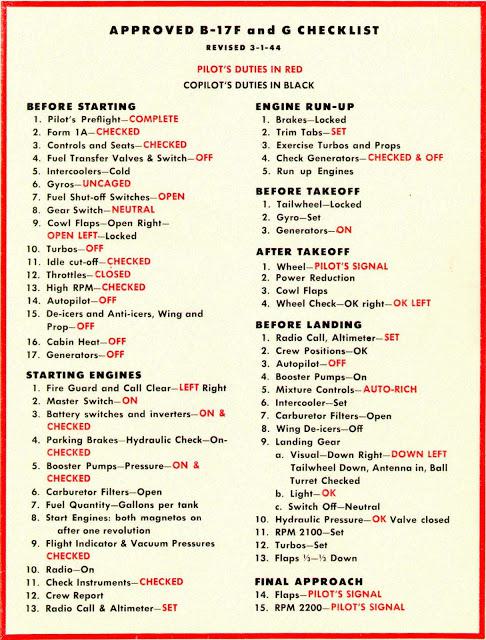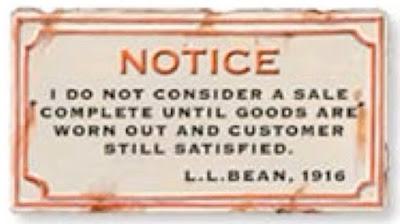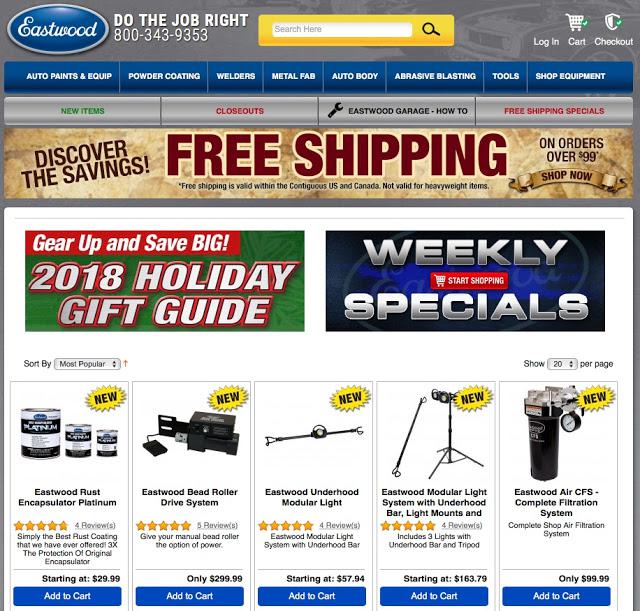Denny Hatch’s ULTIMATE 85-POINT MARKETEER’S CHECKLIST
What do you run through in your mind before putting together a campaign? Do you have a checklist? If not, this second entry from the Denny Hatch archives is a must-read.
- Written by
- Denny Hatch
- Added
- July 09, 2020

A (very) brief history of checklists

On October 30, 1935, Boeing rolled out its masterpiece – the giant four-engine B-17 bomber – dubbed the Flying Fortress. Five years in development, this magnificent weapon was expected to change the sagging fortunes of Boeing and give the United States supremacy in any future air war.
For the plane’s maiden flight at Wright Field in Dayton, Ohio, Boeing invited a vast assemblage of military brass, influential politicians, corporate executives and the media.
Catastrophe!
The giant plane roared down the runway and started to climb when suddenly she banked to the left and crashed. Two crew were killed while the three others were pulled from the burning wreckage.
An investigation determined the plane had been in perfect condition. The cause was ‘pilot error’ – a failure to release the flight control gust blocks. The entire takeoff process was deemed too complex for the crew to remember every single item.
The solution: the creation of the very first checklist in history.
As a result,12,731 of these magnificent behemoths were produced for the US Army Air Force and the British RAF. During World War II they dropped 640,036 tons of bombs on European targets in daylight raids. Today, an amazing ten B-17s are still airworthy.

Today no pilot – commercial, civilian or military – takes to the sky without going through a checklist. The same is true for running hospitals and operating rooms, helping Warren Buffett to analyse companies, preventing disasters at sea, enabling skyscrapers to be built, restaurants to run and checklists were a key factor in Walmart’s response to the devastation of New Orleans during Hurricane Katrina. This helped them get many of their stores back up and running to be part of the relief of the stricken city.
Quite simply checklists keep smart people from screwing up, saving all of us from making careless errors. I’m sure you use them in your daily life and this article shows how to use an ultimate checklist in marketing and communications.

All media: your message
1. The seven key copy drivers – the emotional hot buttons that make people act – are: Fear - Greed - Guilt - Anger - Exclusivity - Salvation – Flattery
‘If your copy is not dripping with one or more of these, tear it up and start over.’ – Bob Hacker
• Do you employ at least one (preferably several) of these copy drivers?
2. The 13 most powerful and evocative words in the English language are:
You - Save - Money - Guarantee - Love - Results- Proven – Safety - Easy - New - Health - Discovery – Free
• Does your copy contain some or all of these words?
3. ‘YOU’ (the prospect or customer) is the subject of every sales effort.
• Does your promotion talk to ‘you’ – as opposed to crowing about ‘we’, ‘us’ or ‘our’, or ‘me’, ‘my’ and ‘mine’?
4. ‘The prospect doesn’t give a damn about you, your company or your product. All that matters is, "What’s in it for me?"’ – Bob Hacker
‘Always listen to W-I-I FM.’
• Are you emphasising your product and what it will do for the prospect rather than yourself and your company?
5. ‘Probably well over half our buying choices are based on emotion.’ – Jack Maxson
‘When emotion and reason come into conflict, emotion always wins.’ – John J. Flieder
• Is your sales pitch emotional (rather than analytical and rational)?
6. ‘People want quarter-inch holes, not quarter-inch drills.’ – MBA Magazine
• Does your sales pitch highlight benefits (e.g., you get quarter-inch holes) – as opposed to features (e.g., buy this drill)?
7. ‘Your job is to sell, not entertain.’ – Jack Maxson
’Cute and clever simply don’t work.’ – Nigel Rowe
‘People don’t buy from clowns.’ – David Ogilvy
• Is your presentation too cute, too clever, too entertaining?
8. If you do not make an offer, your prospect or customer has no reason to reply. No reply means you have no idea whether anybody read what you said and the entire effort was a waste of everybody’s time.
• Do you make an offer?
9. ‘You cannot sell two things at once.’ – Dick Benson
• Are you giving the prospect too many choices?
10. ‘The right offer should be so attractive that only a lunatic would say, "No."’ – Claude Hopkins
‘If you want to dramatically increase your results, dramatically improve your offer.’ – Axel Andersson
• Is your offer the very strongest one you can field?
11. L.L. Bean’s Original Guarantee
NOTE: Alas, in 2018 Bean's bean counters did the arithmetic and found modern consumers were ripping the company off with returns of ancient merchandise. The new guarantee is for one-year.

• Do you include a personal guarantee of absolute satisfaction backed up with the real signature of a real person?
12. Marketers have come up with many tricks to create urgency. For example, one retailer (I cannot remember who) had an item that simply wasn’t selling. So he put it out on a separate table with the sign: ‘ONLY TWO TO A CUSTOMER!’ He sold out in one day.
Another trick is to create an artificial deadline. ‘This offer will expire on [Date].’
• Is your deadline date so far in the future it conveys no immediacy or urgency? Or is the deadline so near to the drop date that if a delay occurs your promotion would go out after the deadline passed?
13. It is imperative to collect testimonials from happy customers and use them in all sales efforts. These are third-party sales people – additional voices that reinforce your message.
If you receive a testimonial, follow up! Contact the customer and ask if you can use the testimonial in future advertising. Ask if you can use the actual name or should it be initials, e.g., – J.R., Augusta, GA
• Do you include testimonials from happy customers or donors?
14. If your offer is complicated and loaded with disclaimers, prospects will say, ‘The hell with it!’
• Is your offer so simple that an idiot can understand it?
15. Some customers love to place an order by phone; they love the human interaction. Others prefer email. Still others are used to filling out order forms and mailing them in.
• Have you made it easy to respond and order – by mail, phone, fax or online – whichever is most convenient for the customer?
16. The order mechanism stands between you and the sale.
• Is your order mechanism so simple an idiot can understand it?
17. The beauty of digital selling is a simple click can take the prospect directly to your website and instantly deep into your glorious world.
• Does your response link take the prospect to a special satellite page on your website dedicated that specific offer – as opposed to your general homepage?
18. Beware of lawyers and bean counters mucking up your offer!
• Has your paranoid legal department destroyed the flow of the argument with a barrage of disclaimers and footnotes in grey sans serif mouse-type and/or the following in superscript? * ‡ TM © 1 2 3
19. Before going live with an offer, it is imperative you hand your promotion off to several strangers who have no skin in the game. Let them tell you whether the whole thing makes sense, tracks, and the order and payment mechanism are smooth and easy.
• Do you have a team of outsiders who are willing to go through your order mechanism to see if it is so foolproof a moron can use it?
20. Every step of the ordering process must be checked out.
• Have you personally dialled the 800-telephone number in your ad (or website, letter, etc.) to make sure it is correct?
21. People hate waiting for a phone to be answered and/or an automated voice saying, ‘Your call is important to us. All our representatives are busy with other customers. Please stay on the line… blah, blah, blah.’
• Will your phone be answered by a live, trained representative no later than the second ring?
22. Your telephone sales reps (TSRs) must be knowledgeable about your product or service and be able to answer all questions.
• Have you provided customer service (or order intake) personnel with copies of sales material (brochures, print ads, infomercial, etc.), so they know what specific offer/product the caller is talking about – as well as actual product samples (if available) – so they can answer questions?
23. In marketing, ROI (Return on Investment) is key to your success.
• Do you have a fail safe system in place that enables you to measure responses by source and determine return on investment (ROI)?
24. Every variation (test cell) of an offer must have an alpha or numeric key easily seen on the order mechanism. If a variety of media are used, each list, publication or website must have its own key code.
• On your telephone sales reps’ checklist, is there an ask for a key code?
25. When people make a purchase, they are in a buying mood. Hence the gaggle of offers in every package you receive by mail, UPS or Federal Express.
• Do your TSRs have an irresistible up-sell in their bag of tricks, so they can take advantage of the buying mood and generate some additional revenue?
26. The people who represent you on the phone and online can enhance – or destroy – your reputation.
• Have you done ‘secret shopping’ — called your 800-number and tested the training of TSRs regarding patience, knowledge and tact?
The Dry Test
27. ‘In direct marketing, two rules and two rules only exist. Rule #1: "Test everything." Rule #2: "See Rule #1.”’ – Malcolm Decker
Rather than deciding to offer a product or service and investing in inventory, it can make sense to do a ‘Dry Test.’ Offer it for sale and see if anybody responds.
The Federal Trade Commission frowns on this practice and has a 30-Day Rule: If you cannot fulfil within 30 days, you are not supposed to make the offer (although it is done frequently).
• Are you able to fulfil orders immediately? If not, do you have a delay letter ready to go out immediately?
28. ‘The sale begins when the customer says "yes."’ – Bill Christensen
• Do your ‘thank you’ letter and fulfilment material resell the product and reassure the customer that buying from you was a really smart decision?
29. Make your prospects and customers comfortable.
• Does your fulfilment material make the customer feel good about you? Does it contain a phone number and e-mail address in case the customer has a question, problem or complaint?
30. My least favourite line in all marketing efforts: ‘Batteries not included.’
• Is your product or service ready to use, immediately, for instant gratification? In other words, can the customer wear it, eat it, start reading or listening to it, hang it on the wall, sit in it, or plug it in and have it do its thing the moment it’s unwrapped?
31. Another marketing screw-up I absolutely hate: Instructions in teeny-tiny sans serif mouse type translated directly from the Chinese.
• Are absolutely foolproof instructions included with the shipment: illustrated, written in simple, readable English and (if need-be) well illustrated?
32. My first employer in business was children’s book publisher Franklin Watts. Every year on his birthday, Frank would walk into the office and snarl: ‘Do not wish me many happy returns! There is not such thing as a happy return.’
• Do you make it easy to return the merchandise?
33. It is easy to get into a groove and neglect new tests.
• If the tests – and confirming tests – are successful, can you turn on a dime and roll out immediately to new prospects?
34. Always have tests in the works.
• Is 20 per cent of your marketing budget allocated for testing?
Readability and Creative

35. Experts urge the use serif type (e.g., Times, Garamond) for copy in printed material and sans serif (e.g. Verdana, Helvetica) in digital communications.
• Is your printed material set in serif type? And is your digital copy sans serif?
36. ‘The addictive nature of web browsing can leave you with an attention span of nine seconds—the same as a goldfish.’ — Dr. Ted Selker, MIT Media Lab
• Does your copy follow Andrew J. Byrne’s dictum:
‘Short words! Short Sentences! Short paragraphs!’
37. Taped to every desk lamp Scott Huch inherited for 30 years was this faded newspaper clipping:

Clipping Above in Readable Text
Tests have shown that a sentence of eight words is very easy to read; of 11 words, easy; of 14 words, fairly easy; of 17 words, standard; of 21 words, fairly difficult; of 25 words, difficult; of 29 or more words, very difficult; so this sentence with 54 words, counting numbers, is ranked impossible. – Virginia-Pilot
• Is any sentence in your copy longer than 28 words? (If so, split it up.)
Online readability: optimal line length
38. ‘Having the right amount of characters on each line is key to the readability of your text. It shouldn’t merely be your design that dictates the width of your text; it should also be a matter of legibility.
‘The optimal line length for your body text is considered to be 50-60 characters per line, including spaces (“Typographie”, E. Ruder). Other sources suggest that up to 75 characters is acceptable. So what’s the downside of violating this range?
‘Too long – if a line of text is too long the visitor’s eye will have a hard time focusing on the text. This is because the length makes it difficult to get an idea of where the line starts and ends. Furthermore it can be difficult to continue from the correct line in large blocks of text.
‘Too short – if a line is too short the eye will have to travel back too often, breaking the reader’s rhythm. Too short lines also tend to stress people, making them begin on the next line before finishing the current one (hence skipping potentially important words).
‘It turns out that the subconscious mind is energised when jumping to the next line (as long as it doesn’t happen too frequently). At the beginning of every new line the reader is focused, but this focus gradually wears off over the duration of the line’ ("Typographie", E. Ruder).
‘In order to avoid the drawbacks of too long and too short lines, but still energise your readers and keep them engaged, we suggest keeping it within the range of 50-75 characters per line’ – Christian Holst, Baymard Institute
• Is your text within the range of 50-75 characters per line?
39. ‘Your first 10 words are more important than the next ten thousand.’ — Elmer ‘Sizzle’ Wheeler
• Are your first 10 words grabbers?
40. ‘50 per cent of adults cannot read at an eighth grade level.’ – Literacy Project
Communications coin-of-the-realm today: the 280-character tweet and the 160-character text. These are bite-sized paragraphs easy to comprehend by a majority of readers.
‘Avoid grey walls of type!’ —David Ogilvy

‘Nothing is less inviting than a solid page of grey text with nothing to break it up or catch the eye.’ – Ed Elliott
• Do your copy and design have tedious and boring grey walls of type?
41. ‘After two or three inches of copy, insert your first mini-headline [crosshead], and thereafter pepper them throughout. They keep the reader marching forward.’ – David Ogilvy
‘An ingenious sequence of boldly displayed mini-headlines can deliver the substance of your entire pitch to glancers who are too lazy to wade through the text.’ – David Ogilvy
• Are you using devices to break up the monotony of type and keep the reader’s eye moving – subheads, boxes, mini-headlines, charts, graphs, illustrations, photographs?
Headlines and e-mail subject lines
42. ‘On the average, five times as many people read the headline as read the body copy. When you have written your headline, you have spent eighty cents out of your advertising dollar.’ – David Ogilvy
• Have you spent as much time on your headline (or email subject line) as on the rest of the promotion?
43. ‘The headline on your ad – and the teaser on your direct mail envelope – and the subject line of your email – are the hot pants on the hooker.’ – Bill Jayme
‘The writer of this chapter spends far more time on headlines than on writing. He often spends hours on a single headline. Often scores of headlines are discarded before the right one is selected.’ – Claude Hopkins
‘Some headlines are 'blind.' They don't say what the product is, or what it will do for you. They are about 20 percent below average in recall.’ – David Ogilvy
‘Avoid the 'hard-to-grasp' headline – the headline that requires thought and is not clear at first glance.’ – John Caples
‘Your headline should telegraph what you want to say—in simple language. Readers do not stop to decipher the meanings of obscure headlines.’ – David Ogilvy
• Does your headline make it immediately obvious what your proposition is about and who it's for?
44. ‘The headline selects the reader.’ – Axel Andersson
• Is it obvious from your headline who should read what you have to say?
45. ‘Type smaller than 9-point is difficult for most people to read.’ – David Ogilvy
• Is any type 9-point or smaller?
46. ‘Never set your copy in white type on a black background and never set it over a grey or coloured tint. The old school of art directors believed that these devices forced people to read the copy; we now know that they make reading physically impossible.’ —David Ogilvy
• Is any copy set in reverse type?
Direct Mail
47. Direct mail packages often have many elements. If any of the various elements in your direct mailing get separated, the prospect should be able to get in touch.
• Does your company name and address, 800 number and link to your website appear somewhere on every piece in the promotion, no matter how small?
48. ‘Two basic tenets of selling are that (1) people buy from other people more happily than from faceless corporations, and that (2) in the marketplace as in theatre, there is indeed a factor at work called “the willing suspension of disbelief.”’ – Bill Jayme
‘A letter should look and feel like a letter.’ – Dick Benson
• Does your letter look and feel like a letter?
49. The computer is magical. It can print letters with personalised name, address and salutation at the top and blue signature at the bottom.
• If your letter is personalised, does the typeface in the personalisation (date, name, address, salutation) match the typeface in the body of the letter?
50. Every letter should be signed. However the actual signature of the letter writer should be at the bottom – not a phoney-baloney computerised signature.
• Is the signature that of a real person (as opposed to a computer-generated font) and is it printed in blue or black ink (as opposed to red or green)?
51. Hand inserting elements into a direct mailing is expensive.
• Are all the elements in your mailing small enough to fit in the envelope and folded so they’re machine-insertable?
52. Postage is the biggest cost factor in direct mail – 40¢ to a dollar or more a pop.
Any mailing sent to the wrong person is (1) junk mail and (2) a total waste of money.
• Do you have a list expert – a seasoned professional who knows lists and which lists are working – as an employee or consultant?
53. If the offer does not get delivered, its return is 0% and your money is wasted.
• Have you used all the tools you can find to clean your list so all the contact points (address, email, phone) are current and correct?
54. Do not be a mass mailer without having an expert on United States Postal Service (USPS) mailing rules in your employ or as a consultant.
• Do you take advantage of the USPS tools to help keep your customer and prospect lists squeaky-clean?
55. List owners are desperate for list rental revenues.
• Do you track delivery rates on every rented list so you know if you’ve been conned by an unscrupulous list owner or broker?
56. Every direct mail order form (or address label) should have a key code that identifies the list it went to.
• Have you checked the key coding, so that you can track the order back to the original source of the name and thus determine Return on Investment (ROI)?
57. What happens when your envelope is opened? What is the first thing the prospect or customer is supposed to see?
• Have you given your letter-shop detailed instructions – and a sample dummy of the mailing – so no question exits about how every element is folded, the order in which it’s inserted and which side of each element faces the envelope flap?
58. Lumpy mailings—envelopes stuffed with a free premium (freemium) or tchotchke/gewgaw/goodie can make your mailing stand out in a stack of flat envelopes.
‘Tokens and stickers always improve results.’ – Dick Benson
‘Adding elements to a mailing package, even though obviously adding cost, is more likely to pay out than cheapening the package’ – Dick Benson
• Is your direct mail package a delight to open, pleasing to the eye and exciting?
59. I have known of mailers who delivered bags and bags of direct mail to the USPS Sectional Center Facility (SCF) – complete with postage – only to have the post office reject it as ‘unmailable.’
• Have you checked with your local postmaster to be sure the thing is indeed mailable? Have you checked with every list owner from whom you are renting that your mailing is okay to mail?
60. List owners who rent their lists love rental income. It’s free money. Typically they schedule mailings to their lists a week apart, so their customers don’t get inundated with offers and list renters have the best chances of generating response.
• Have you cleared the mail date with all the list owners from whom you’re renting names? And if a mailing is delayed, have your re-cleared the mailing date with each list owner?
61. Typos can cost you big money.
• Are the permit numbers on your outgoing indicia and incoming business reply mail correct?
62. This is basic stuff, but…
• Is the address on your Business Reply Mail absolutely correct?
63. No money in the till means no mailing will go out.
• Do you have postage money for the mailing on deposit with your letter-shop or the USPS?
64. No money on deposit means no orders will come in.
• Do you have money deposited in your USPS Business Reply account?
65. Always add seed names to your mailing lists – your own and rented lists.
• Did you add a variety of ‘seed’ addresses—colleagues nationwide, who will forward the mailings to you when received—so you can see how the piece looks when delivered and the date received?
Space (off-the-page) advertising
66. ‘I’ve never bought an ad at full rate in my life.’ – Iris Shokoff
• Do you have a professional media buyer negotiating the best rates?
67. ‘Fish where the fish are.’ – McRae Ross
• Does the publication you have chosen have a history of success with direct response advertisers? Have your competitors advertised there more than once?
68. Versionalise! This is true for space advertising, digital ads and TV.
• If your ad is running in a niche publication (as opposed to general interest), have you versionalised the headline and copy to appeal to that specific readership?
69. Make it easy to order.
• Is the order coupon on the lower outside corner of the ad (as opposed to the gutter, the top or worse, in the centre?
70. Don’t let your designer play games.
• Is the coupon square or rectangular as opposed to a triangle, rhomboid, circle, or some other weird and disconcerting shape?
71. If a readers cuts the coupon from the ad page with the intent to order…
• Are the reply address, phone number, email address and Web address on the order coupon as well as in the ad itself?
72. ‘Always make it easy to order.’ – Elsworth Howell
• Is there plenty of room on the coupon to legibly write a credit card account number and all other information?
Catalogues
73. Some catalogers save money by not including a tear-out order form because so many orders come in by phone or email. However, many catalog buyers like an order from to use as a shopping list with which they can phone in or email their orders.
• Have you included an order form (even if its printed on a catalog page) for a shopping list purpose, if not for ordering?
Email / E-commerce
74. Pay attention to your subject line.
• Is the subject line of your email no more than 40-50 characters max?
75. A serious error many writers commit is spending many hours perfecting an email message – writing, rewriting, editing – until it is an absolute gem. Whereupon as an afterthought they bang out a subject line and click ‘Send’. If the recipient does not respond to your subject line, the entire email is a 100 per cent failure and your effort a total waste.
• Is the subject line of your email a grabber – irresistible?
76. Remember spam filters.
• Will your subject line get past spam filters?
77. Online you are a mouse click away from oblivion.
• Is your website landing page powerful, to the point, easy to navigate, and not wordy or boring?
78. A huge percentage of consumers and business people rely on their smart phones and tablets as opposed to desktops and laptops.
• Is your landing page mobile friendly?
79. This may be obvious, but…
• Have you tested your landing page on an iPhone, iPad, Android phone and Android tablet to make sure it works okay visually?
80. Beware of home page distractions.
• Do distractions exist on your landing page that could take the customer’s mind off the business at hand (e.g., ‘Investor Relations’, ‘Press Office,’ ‘About Us,’ ‘Site Security’ etc.)?
81. Don't allow your designer to sacrifice ‘pretty’ for ‘readability’.
• Is your website unreadable because copy is in grey or pastel hues rather than clear black?
Broadcast — DRTV
82. Don’t be coy about how you can be reached.
• Are your 800 numbers and Web reply address prominently displayed in large type at the bottom of the screen throughout the commercial?
83. Make sure your inbound telemarketing process is smooth.
• Have you alerted your inbound telemarketing operation as to the precise times that your commercials are running and provided a response estimate?
Every order is precious!

84. Many years ago I wrote a long magazine cover story about the mail order catalogue company, Eastwood Auto Restoration Supplies. Every new employee – from the mail room and janitorial staff to the executive suite – spent their first three weeks learning about the company, its massive inventory, how orders were processed and how to knowledgeably talk to a customer. Thus if the order department got backed up, bells alert all employees they might have to drop everything and service incoming customer calls. The entire company could be turned into a giant order processing operation in minutes! My opinion: brilliant!
• Have you made arrangements to handle overflow calls during spike periods?
85. IMPORTANT: Did you have at least one professional proofreader flyspeck your copy for misspellings, typos, errors and goofs?
This checklist owes a tremendous debt to Dr. Atul Gawande’s ‘The Checklist Manifesto: How to Get Things Right.’ This is essential reading for virtually all professionals in every field. A masterpiece! Metropolitan Books, 224pp.ISBN-13:978-0805091748, hardcover, paperback, Kindle.

















